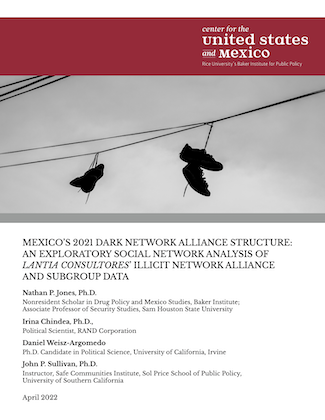El Centro
Third Generation Gangs Strategic Note No. 48: “Novo Cangaço” Style Urban Raid in Guarapuava, Paraná (PR), Brazil
About the Author(s)
Commentary: It Starts at the Top in Honduras: The Case of Juan Orlando Hernández, Drug Trafficking, and Organized Crime
About the Author(s)
New Global Cities in Latin America and Asia: Welcome to the Twenty-First Century
Small Wars Journal−El Centro Fellow Pablo Baisotti has published a new book New Global Cities in Latin America and Asia: Welcome to the Twenty-First Century. The book assesses the role of global cities while examining their social difficulties: organized crime, drug trafficking, slums, and economic inequalities. Dr. Baisotti includes researchers from a range of fields to interpret the role and future of megacities in Latin America and China.

The book is divided into two parts: Part I. Asia,: Center of growth and globalism and part II. Latin America: Opening , Globalization, and Crisis. Part II contains two chapter of specific interest to SWJ−El Centro readers. These are: Chapter 9, "Urban Conflict and Transnational Crime in Latin American Cities by SWJ−El Centro Senior fellow John P. Sullivan and Chapter 11, "Economy, Inequalities, and Cities: Chinese Influence in Latin America. New Global Cities in Latin America and Asia is available in Kindle, Hardcover, and Paperback formats.
Source: Pablo Baisotti, New Global Cities in Latin America and Asia: Welcome to the Twenty-First Century. Ann Arbor: University of Michigan Press. 2022.
SWJ El Centro Book Review – Drug Wars and Covert Netherworlds: The Transformation of Mexico’s Narco Cartels
- Read more about SWJ El Centro Book Review – Drug Wars and Covert Netherworlds: The Transformation of Mexico’s Narco Cartels
- 1 comment
About the Author(s)
Mexico’s 2021 Dark Network Alliance Structure
Small Wars Journal−El Centro researchers have published a working paper, “Mexico’s 2021 Dark Network Alliance Structure: An Exploratory Social Network Analysis of Lantia Consultores’ Illicit Network Alliance and Subgroup Data” at the Center for the United States and Mexico at Rice University’s Baker Institute for Public Policy.

The research team was led by SWJ−El Centro Senior Fellow Nathan P. Jones, with contributions from SWJ−El Centro Fellow Irina Chindea, SWJ−El Centro Associate Daniel Weisz Argomedo, and SWJ−El Centro Senior Fellow John P. Sullivan. "Mexico’s 2021 Dark Network Alliance Structure," maps out the network of alliances and subgroups within the two most powerful cartels in Mexico — the Sinaloa Cartel and the Cártel de Jalisco Nueva Generación— and reveals key structural differences that could have important implications for policymakers.
Abstract: This paper assesses Mexico’s organized crime alliance and subgroup network structures. Through social network analysis (SNA) of data from Lantia Consultores, a consulting firm in Mexico that specializes in the analysis of public policies, it demonstrates differential alliance structures within Mexico’s bipolar illicit network system. The Cártel de Jalisco Nueva Generación’s (CJNG) alliance structure is top-down and hierarchical, while the Sinaloa Cartel is denser, particularly in the broader Tierra Caliente region. Additionally, our analysis found a sparse overall network with many isolates (organized criminal groups with no relations to other groups) and disconnected components. Further, we identified organized crime networks that might fill future power vacuums based on their network positions, following state or rival high-value targeting of major cartels. The implications of these findings are discussed, and policy recommendations are provided.
Source: Nathan P. Jones, Irina Chindea, Daniel Weisz-Argomedo, and John P. Sullivan, “Mexico’s 2021 Dark Network Alliance Structure: An Exploratory Social Network Analysis of Lantia Consultores’ Illicit Network Alliance and Subgroup Data.” Center for the United States and Mexico, Rice University’s Baker Institute for Public Policy. April 2022. https://doi.org/10.25613/KMGB-NC8.
Third Generation Gangs Strategic Note No. 47: Woman with a Baby Arrested at Novo Rio Bus Station for Transporting a .50 Caliber Anti-Materiel Rifle in Her Luggage to Comando Vermelho Norte
- Read more about Third Generation Gangs Strategic Note No. 47: Woman with a Baby Arrested at Novo Rio Bus Station for Transporting a .50 Caliber Anti-Materiel Rifle in Her Luggage to Comando Vermelho Norte
- 2 comments
